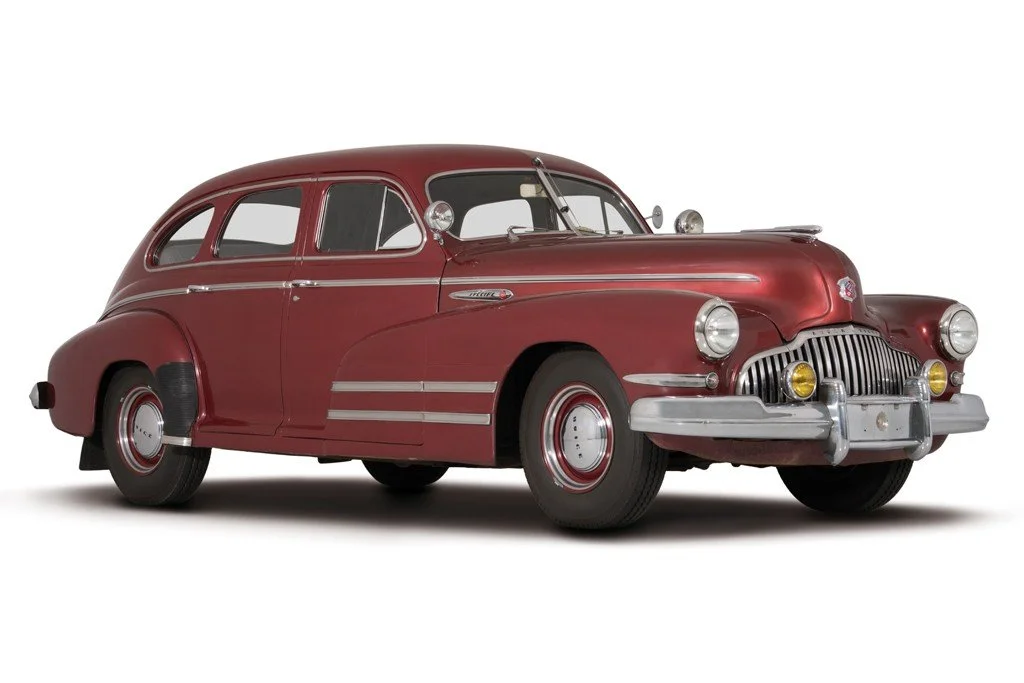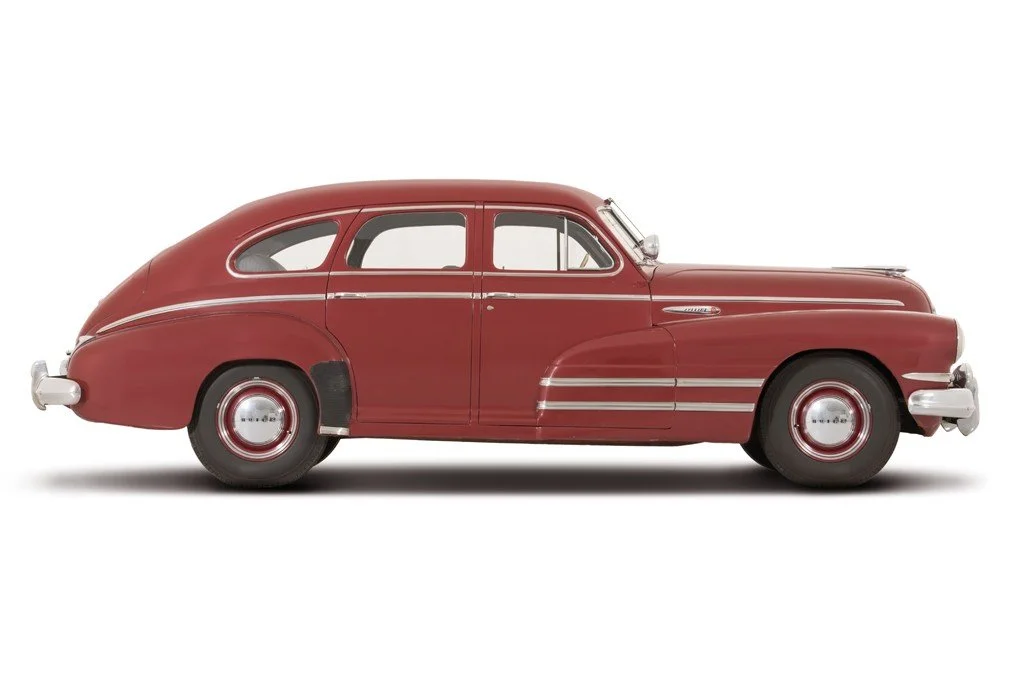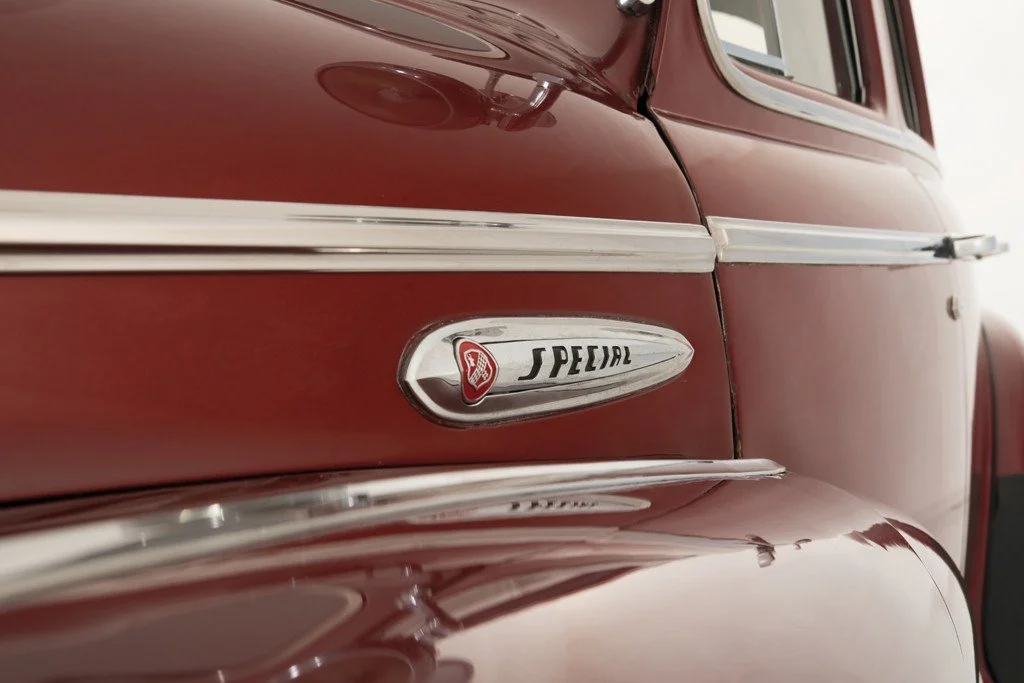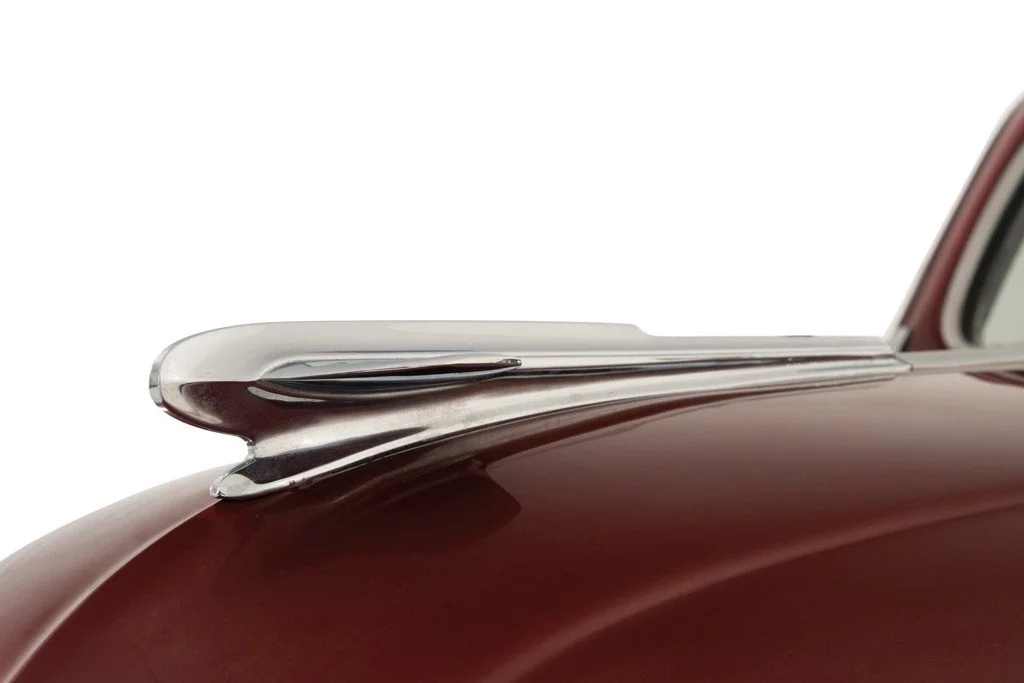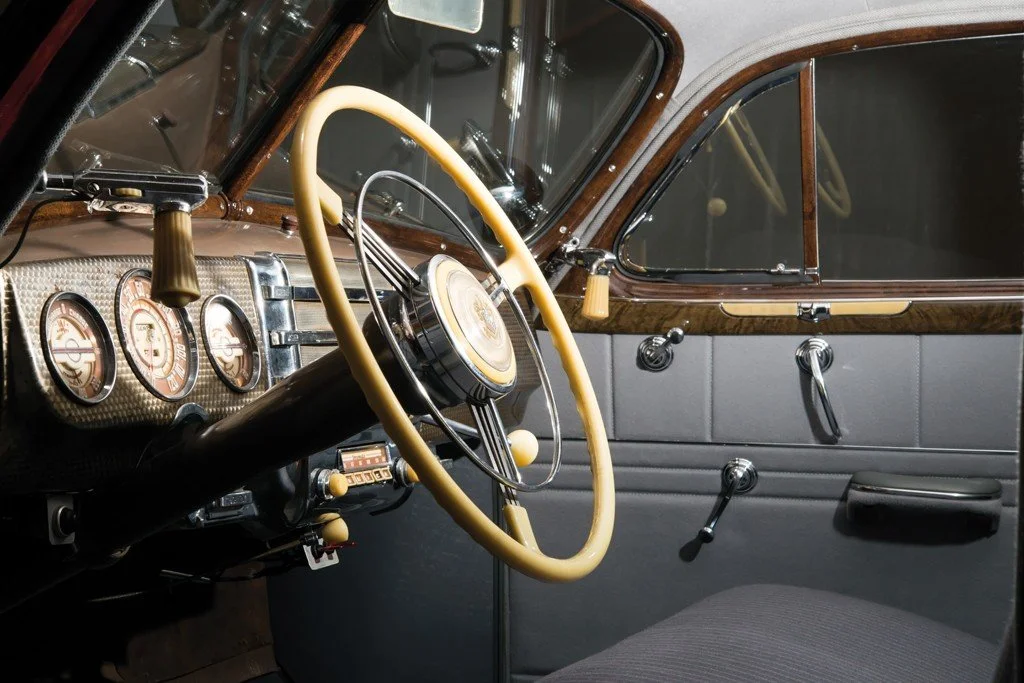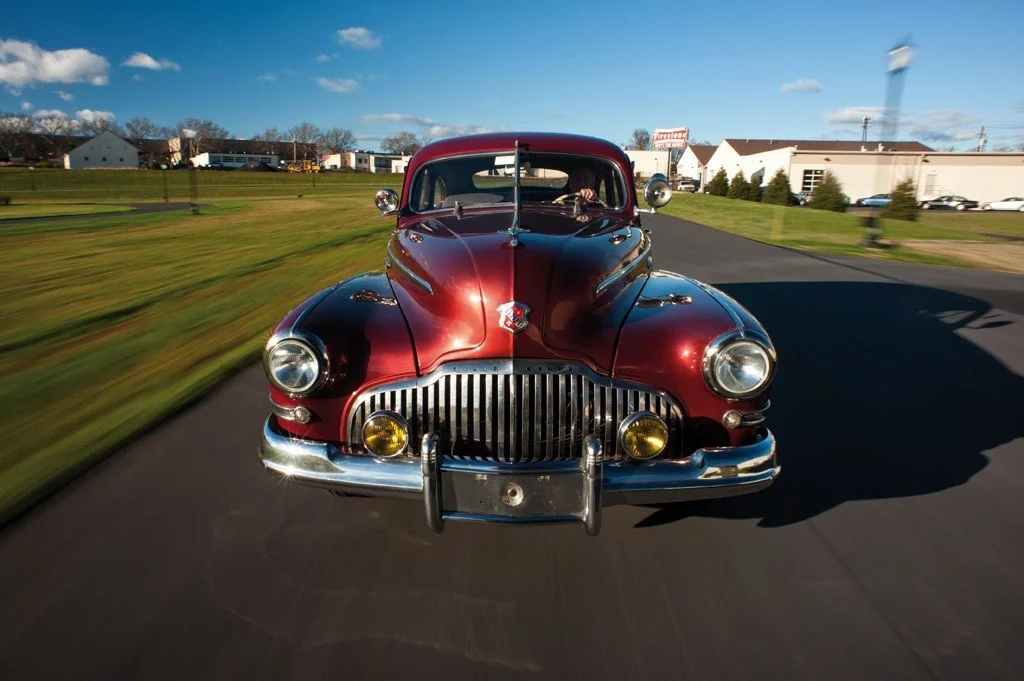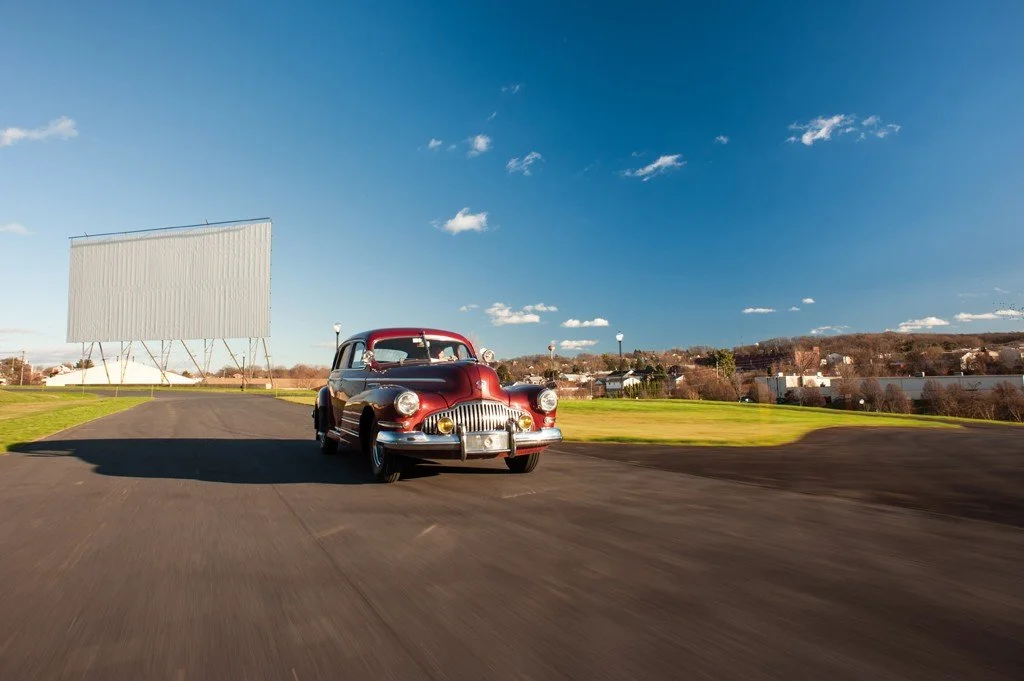-
The 1942 Buicks were available in six series and twenty-three models. The Special series was built on two wheelbases, 118 and 121 inches, and were powered by the powerful and reliable 248 cubic inches straight eight that was rated at 110 horsepower. “Compound Carburation” was available, but seldom ordered.
Nicola Bulgari Car Collection acquired this Model 41 Special Sedan in good condition and the car was subsequently modified in order to be driven from coast to coast, should the need arise. So “Compound Carburetion”, dual electric fuel pumps, upgraded suspension, black-wall radial tires and auxiliary electric radiator fan were added to the car. Radio, heater, fog lamps and spotlights complete the accessory list.
The body has the original color in Royal Maroon and the interiors retain Gray fabric cloth. -
Company
General MotorsWheelbase
121inInterior trim
Grey clothBrakes
front and rear drumsMake
BuickLength
205.5inEngine
inline 8 - 248cidTires
7.00x15Model
Special - Model 41Width
78inCarburetor
2 Carter 509 SOriginal Price
$1,203Body style
4-door SedanWeight
3,700lbsHorsepower
118hp @ 3600rpmProduction
17,187Model year
1942Exterior paint
Royal MaroonTransmission
Synchro-shift 3-speed manual -
Buick’s colors were flying high in 1941, with production, sales and number of models all setting records for the last full model year prior to the shutdown of civilian car production for the duration of World War II. The Buick Division would end the 1941 model year solidly in fourth place, trailing only Chevrolet, Ford and Plymouth. With total model year production amounting to more than 377,000 cars, Buick had much to celebrate for 1941. By the 1940s, middle-class America was just getting back on its feet after the devastating economic depression started by the stock market crash of 1929. The new output record signaled a return to prosperous times and it was clear that the 1941 models were very successful. While retaining the basic design of the 1940 model, the new Buicks were completely restyled. The fenders were reshaped to assume a more streamlined look, and the headlamps were tucked completely into the fenders. Running boards and door hinges disappeared, contributing to the sleeker look. Grille and hood were also redesigned, with the latter now opening from the sides instead of the firewall hinges, starting a Buick practice that would last until the 1954 model year.
The Buick line for 1941 consisted of the Special 40, Super 50, Century 60, Roadmaster 70 and Limited 90 series. Since Buick was appealing to many Ford and Chevrolet buyers who wanted a bit more flash than the low-priced three could offer, but could not afford an expensive car, the least expensive Special models proved to be the most popular in the Buick line-up. The Special series listed for just a couple of hundred dollars more than a Chevy or a Ford, and represented a bargain in the 1941 car market. Extra trim, more pleasant styling and luxurious interiors were Buick trademarks, separating its models from the low-priced three. The Special 40 series was available in two lines, the 40A with a 118 inch wheelbase and the 40B with a three inches longer wheelbase. The engine was a 248 cubic inch straight-eight that had a 115 horsepower rating. “Compound Carburation” was an option, featuring a dual carburetor setup, designed to give extra power when the accelerator pedal was fully pressed, but using just one carburetor for daily driving. It was an innovative design that would set the basis of the modern four-barrel carburetor, but for the times it was troublesome and used too much gasoline.
The 1942 models were a heavy restyle of the successful 1941 styling, with a new wide grille, long flowing fenders on some series (Super and Roadmaster), wrap-around bumpers and a restyled dash. The 248 engines used in the Special series were now equipped with cast iron pistons, slightly diminishing the horsepower output. But the clouds of the Second World War were getting darker, and the government stopped civilian car production on February 2, to concentrate on the military effort. New car production would resume in 1946, bearing some modifications to the basic 1942 models.

